

Using the Imaging Source DFK 33UP1300 colour industrial camera on a microscope – with the LM microscope adapter as optical connector device
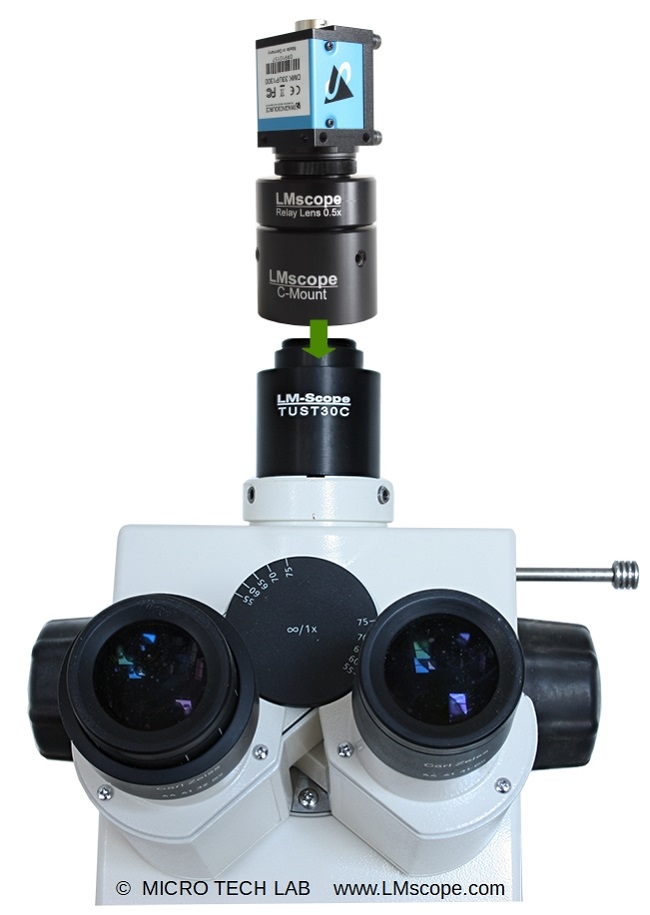
USB industrial cameras are produced in large quantities and therefore carry relatively moderate price tags. Coming in at around € 450, the Imaging Source DFK 33UP1300 industrial camera is a budget-friendly alternative to expensive microscope cameras from branded microscope manufacturers, such as Zeiss, Nikon, Olympus or Leica. The camera comes with a comprehensive software package which includes drivers and software tools for measurement and image acquisition. It is small and compact, has a USB3 interface and can be connected to lenses or microscopes via the C-mount port.
Below is a summary of the key features of the DFK 33UP1300 that are important if you want to attach it to a microscope:
- Colour camera with USB3 interface
- C/CS lens mount
- 1/2" sensor with 1,280×1,024 (1.3 MP) resolution
- 10 bit dynamic range
- 210 fps frame rate
- Camera control via IC Capture and IC Measure software (included with the camera)
- Sensor Ansicht Imaging Source DFK 33U C-mount Kamera
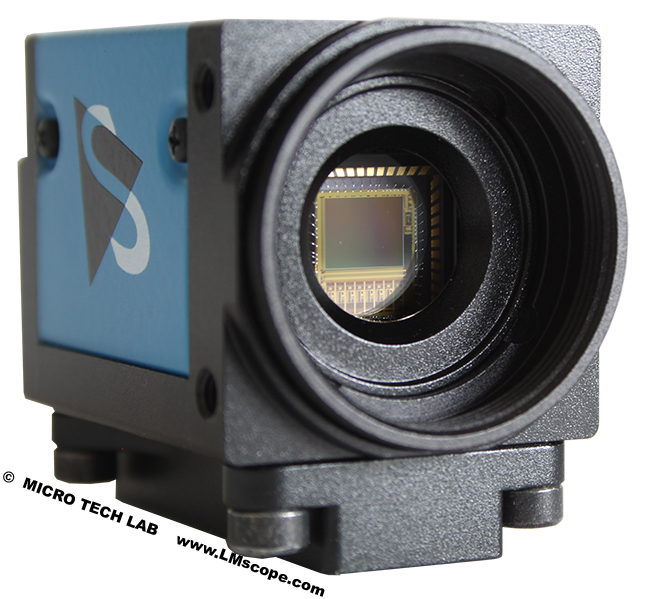
Our LM digital adapters with built-in optics enable users to attach the camera to almost any microscope. We offer adapter solutions that work on phototubes as well as eyepiece tubes. The photo below shows the small, lightweight DFK 33UP1300 attached to a Zeiss microscope with a 30 mm eyepiece tube using an LM eyepiece tube adapter solution. In this case, the camera works as an eyepiece camera. Because of the half-inch sensor size, we recommend using an adjustment factor of 0.5x. This enables the camera to capture the largest possible field of view without any vignetting. The field of view displayed on the camera is roughly equivalent to that of a standard widefield eyepiece with a 10x magnification factor.
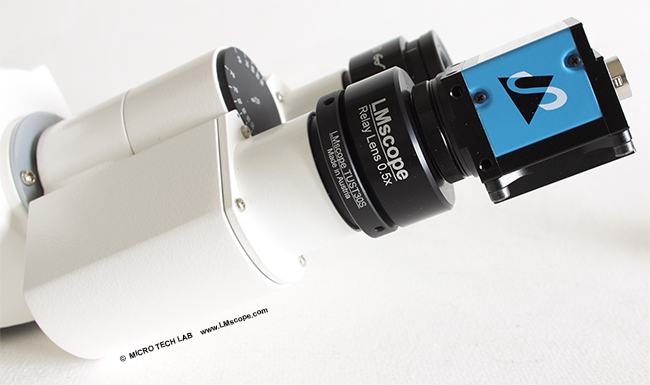
Its standardised C-mount port also allows the DFK 33UP1300 to be attached to measuring microscopes, test microscopes or macroscopes for photographic documentation and measurement tasks in science or for technical applications.
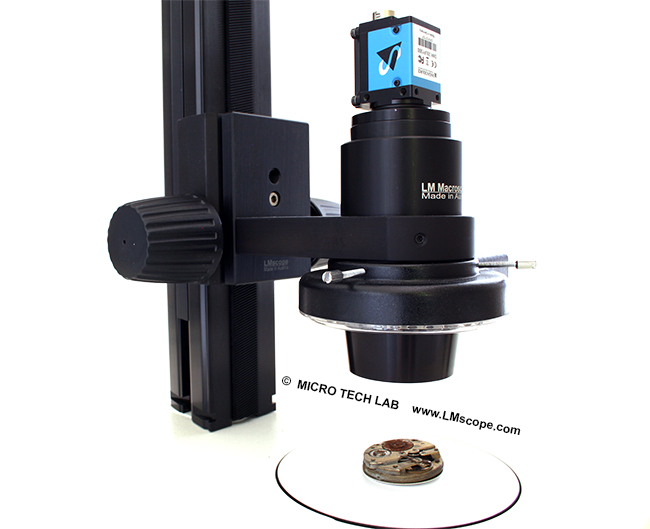
The camera comes with the two software programs IC Capture and IC Measure. Both are powerful tools that perform a variety of tasks. We particularly liked IC Measure and its many different functionalities. The manufacturer also provides drivers for Linux, and a package for Ubuntu can be downloaded from the company’s website. This makes it possible to integrate the camera into self-developed software in Window and Linux. Software Development Kits (SDKs) are available in the manufacturer’s download area.
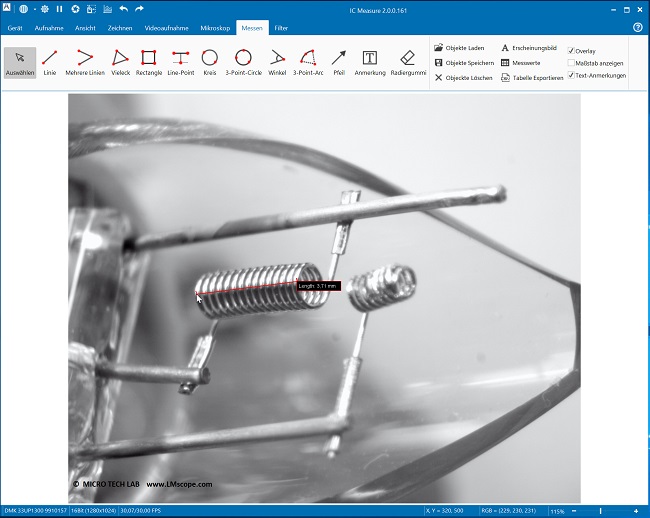
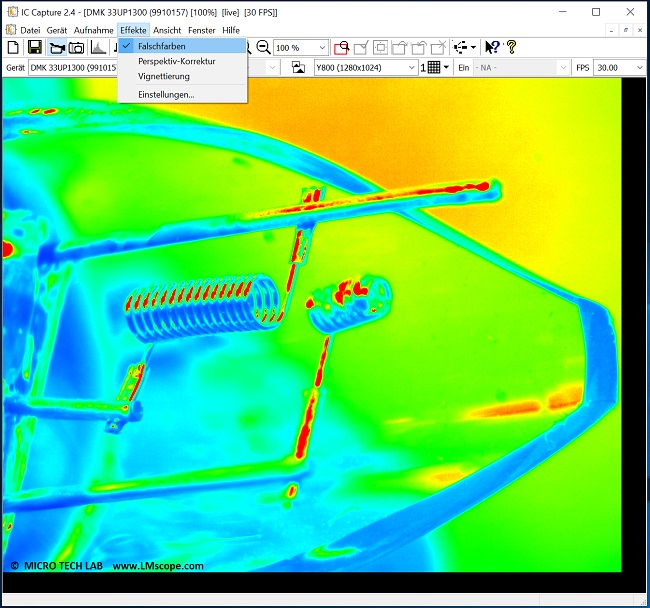
The DFK 33UP1300 has a super compact design (29 mm x 29 mm x 43 mm) and only weights about 65 grams. This is a benefit for some applications, because the camera doesn’t take up much space. The photo below also shows the 1/2" camera sensor, which measures approximately 6.4 mm x 4.8 mm
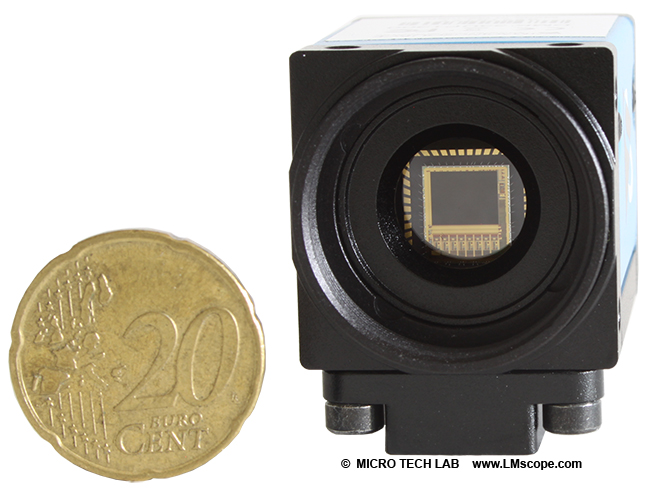
In our tests, we measured the surface temperature of the image sensor during Live View operation. After about 20 minutes, sensor temperature settled at 48°C. The temperature of the image sensor is a factor that influences image quality: the warmer the sensor, the noisier the images, and the poorer the dynamic range. Conversely, improving the internal temperature management of the sensor leads to a significant decrease in sensor temperature. Compared to USB cameras, the sensor temperature of current state-of-the-art DSLR or DSLM cameras ranges around 35°C. Optimising sensor temperature through complex cooling systems and thermal management adds weight to the camera body, but has definite benefits in terms of improved image quality.
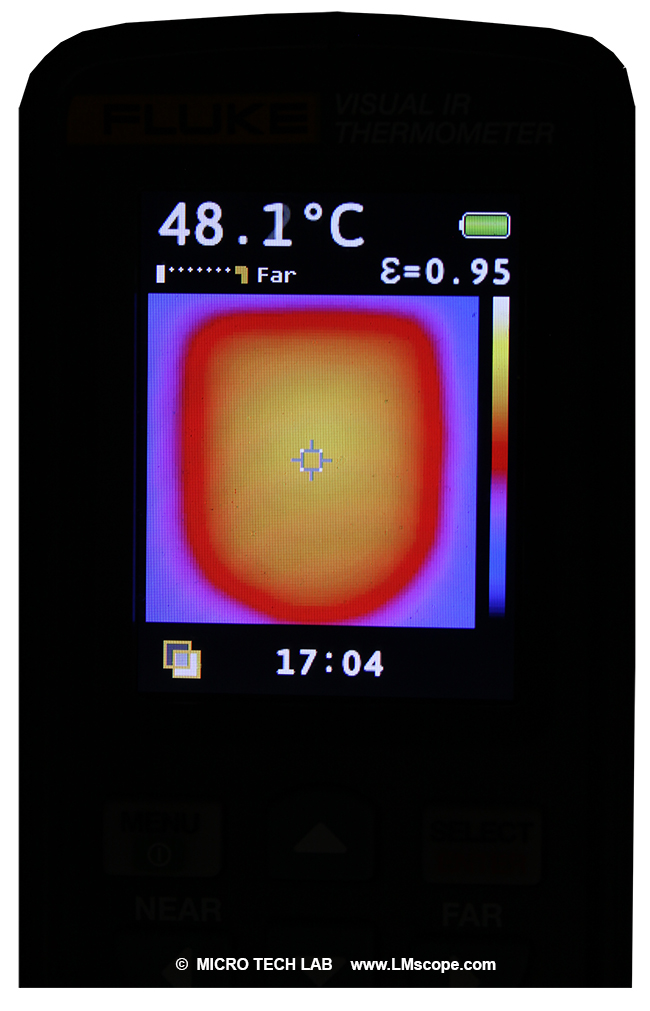
Our image quality tests revealed a moderate dynamic range, which is in line with the manufacturer’s specifications of a 10-bit dynamic range. Camera systems with larger sensors, by comparison, deliver a dynamic range of around 16 bits. The low pixel count of around 1.3 MP is clearly not enough for some applications. At this resolution, the camera can capture up to 210 frames per second, which means that even fast processes can be documented. Although this is sufficient for standard measuring tasks, it is definitely not enough for high-quality photographic documentation. However, the manufacturer also has high-resolution C-mount cameras in its portfolio of products.
The image sensor was presented at VISION, a leading machine vision trade fair in Stuttgart, in 2014 as a highly sensitive image sensor with a high frame rate of up to 210 fps for industrial and medical use.
To demonstrate the difference in size, we have taken a picture of a Sony DSLM with APS-C sensor next to the Imaging Source DFK 33UP1300.
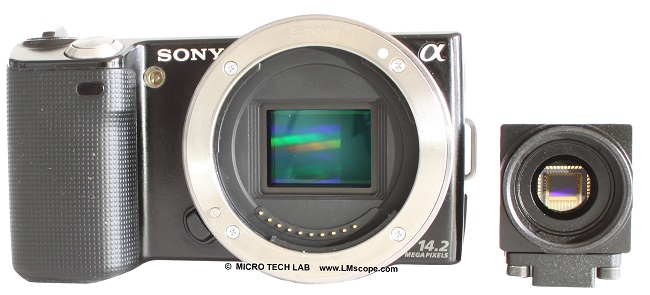
At the back of the DFK 33UP1300, there is a mounting plate with various threaded holes, which makes it possible to attach the camera to different tripods or to test setups.
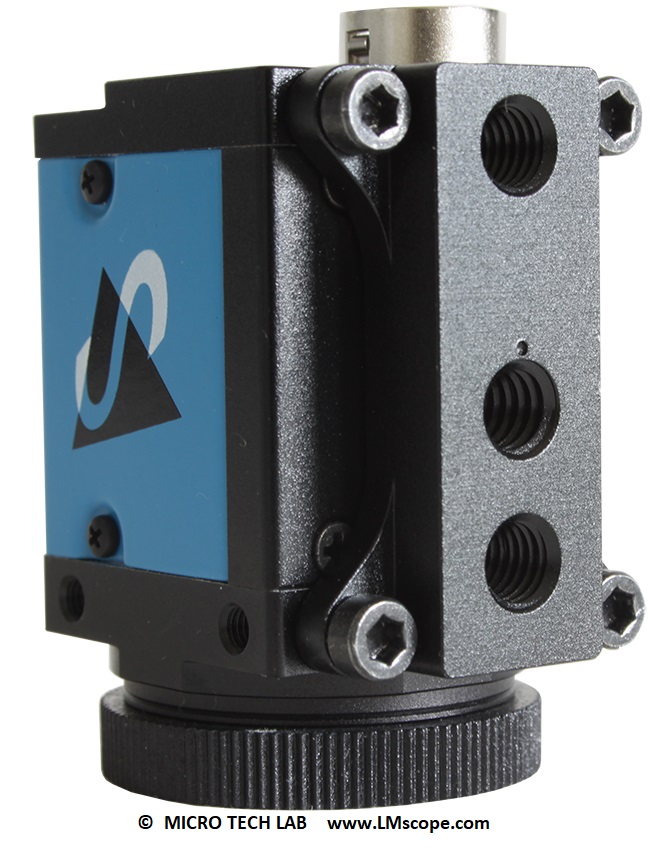
The camera can be used with both C-mount and CS-mount lenses. When using CS mount devices, the 5 mm extension ring that comes with the camera needs to be removed. In the photo below, this 5 mm ring is still attached.
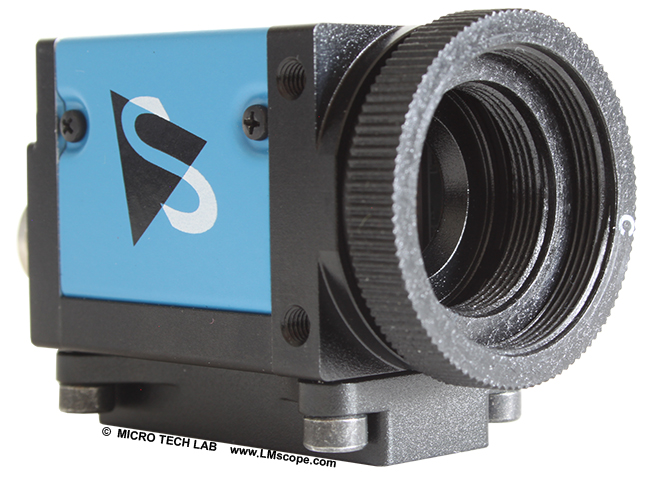
The connectors are located at the top of the camera: a standard USB3 port and a 12-pin I/O connector with the pins (STROBE_OUT, TRIGGER_IN (+), TRIGGER_IN (+)).
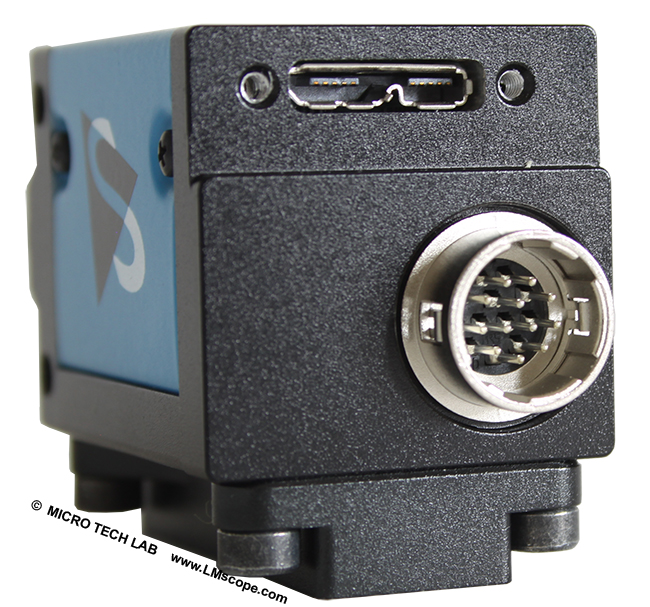
Conclusion: The Imaging Source DFK 33UP1300 USB camera scores points for its compact design, affordable price, universal C-mount port and extensive software package. Its standard interchangeable lens mount (C-mount) allows the camera to be attached to a variety of lenses, and, when used with our LM microscope adapter, also to many different microscopes (laboratory microscopes, stereomicroscopes, measuring microscopes, test microscopes and even macroscopes). We particularly liked the measuring software for length, area and distance measurement which is included in the package free of charge. However, because of its simple and inexpensive design and the relatively small image sensor, the camera also exhibits some weaknesses when it comes to image quality, both in terms of dynamic range and pixel number. More information about selecting the camera that is best suited for use with a microscope can be found in our camera recommendations and our camera ranking.